 W
WVichy France is the common name of the French State headed by Marshal Philippe Pétain during World War II. Evacuated from Paris to the resort town of Vichy in the unoccupied "Free Zone" in the southern part of Metropolitan France, it remained responsible for the civil administration of France as well as its colonies.
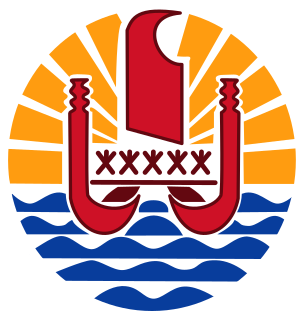 W
WAn unofficial referendum on whether to support the Free French or the Vichy regime was held in the French Oceanian islands of Mo'orea and Tahiti on 24 August 1940. The referendum was held following a call from Charles de Gaulle to oppose the Vichy government on 18 June, and was organised by the underground Free France Committee.
 W
WThe Armistice of 22 June 1940 was signed at 18:36 near Compiègne, France, by officials of Nazi Germany and the Third French Republic. It did not come into effect until after midnight on 25 June.
 W
WBeaune-la-Rolande internment camp was a French-run Nazi transit camp for Jews in Beaune-la-Rolande, France. 18,000 Jews were held in the camp, most of them to be transported to Auschwitz. The camp was closed on 4 August 1943 by SS officer Alois Brunner, then commander of Drancy concentration camp, under direct orders from Heinrich Himmler.
 W
WThe Camp de Rivesaltes, also known as Camp Maréchal Joffre, is a military camp in the commune of Rivesaltes nearby Perpignan in the department of Pyrénées-Orientales in the South of France. The camp was also used to detain civil populations several times between 1939 and 2007. Its darkest period was in 1942, when 2,251 Jews, including 110 children, were transferred from Rivesaltes via the Drancy internment camp to the Nazi extermination camp Auschwitz, where they were murdered.
 W
WThe Carlingue were French auxiliaries who worked for the Gestapo, Sicherheitsdienst and Geheime Feldpolizei during the occupation of France in the Second World War.
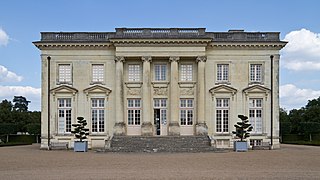 W
WThe Chateau de Pignerolle is located to the east of Angers in the commune of Saint-Barthélemy-d'Anjou in the department of Maine-et-Loire in France.
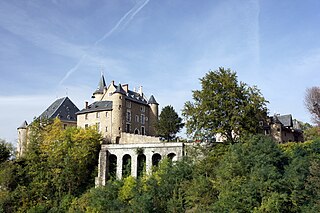 W
WThe Château d'Uriage is an historic castle in Saint-Martin-d'Uriage, Isère, Rhône-Alpes, France.
 W
WThe Royallieu-Compiègne was an internment and deportation camp located in the north of France in the city of Compiègne, open from June 1941 to August 1944. French resistance fighters and Jews were among some of the prisoners held in this camp. It is estimated that around 40,000 people were deported from the Royallieu-Compiègne camp to other camps in the German territory of the time.
 W
WThe Dortan massacre was a massacre in which approximately 35 French civilians were killed by Wehrmacht volunteers in the village of Dortan, Ain during World War II. It was perpetrated by Volunteer Cossack-Stamm-Regiment 5, part of the Freiwilligen-Stamm-Division, in 12–21 July 1944 during Operation Treffenfeld. It was part of a wider German anti-partisan offensive against the French Maquis de l'Ain et du Haut-Jura, which staged a massive uprising in mid-1944 along with other French resistance groups.
 W
WDrancy was an assembly and detention camp for confining Jews who were later deported to the extermination camps during the German military administration of Occupied France during World War II. It was located in Drancy, a northeastern suburb of Paris, France.
 W
WFanny's Journey is a 2016 French-Belgian children's war drama film co-written and directed by Lola Doillon. The film is inspired by an autobiographical book by Fanny Ben Ami.
 W
WBernard Faÿ was a French historian of Franco-American relations, an anti-Masonic polemicist who believed in a worldwide Jewish-Freemason conspiracy, and, during World War II, a Vichy official.
 W
WFrench Constitutional Law of 1940, are the bills that were voted into law on 10 July 1940 by the National Assembly, which comprised both the Senate and the Chamber of Deputies during the French Third Republic. The law established the regime of Vichy France. It passed with 569 votes to 80, with 20 abstentions. The group of 80 parliamentarians who voted against it are known as the Vichy 80. The law gave all the government powers to Philippe Pétain, and further authorized him to take all necessary measures to write a new constitution. Pétain interpreted this as de facto suspending the French Constitutional Laws of 1875 which established the Third Republic, even though the law did not explicitly suspend it, but only granted him the power to write a new constitution. The next day, by Act No 2, Pétain defined his powers and abrogated all the laws of the Third Republic that were incompatible with them.
 W
WDuring World War II, the French prisoners of war were primarily soldiers from France and its colonial empire captured by Nazi Germany. Although no precise estimates exist, the number of French soldiers captured during the Battle of France between May and June 1940 is generally recognised around 1.8 million, equivalent to around 10 percent of the total adult male population of France at the time. After a brief period of captivity in France, most of the prisoners were deported to Germany. In Germany, prisoners were incarcerated in Stalag or Oflag prison camps, according to rank, but the vast majority were soon transferred to work details (Kommandos) working in German agriculture or industry. Colonial prisoners, however, remained in camps in France with poor living conditions as a result of Nazi racial ideologies.
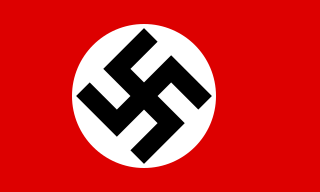 W
WThe Military Administration in France was an interim occupation authority established by Nazi Germany during World War II to administer the occupied zone in areas of northern and western France. This so-called zone occupée was renamed zone nord in November 1942, when the previously unoccupied zone in the south known as zone libre was also occupied and renamed zone sud.
 W
WGurs internment camp [ɡyʁs] was an internment camp and prisoner of war camp constructed in 1939 in Gurs, a site in southwestern France, not far from Pau. The camp was originally set up by the French government after the fall of Catalonia at the end of the Spanish Civil War to control those who fled Spain out of fear of retaliation from Francisco Franco's regime. At the start of World War II, the French government interned 4,000 German Jews as "enemy aliens", along with French socialist political leaders and those who opposed the war with Germany.
 W
WThe Holocaust, also known as the Shoah, was the World War II genocide of the European Jews. Between 1941 and 1945, across German-occupied Europe, Nazi Germany and its collaborators systematically murdered some six million Jews, around two-thirds of Europe's Jewish population. The murders were carried out in pogroms and mass shootings; by a policy of extermination through work in concentration camps; and in gas chambers and gas vans in German extermination camps, chiefly Auschwitz, Bełżec, Chełmno, Majdanek, Sobibór, and Treblinka in occupied Poland.
 W
WFor the former hotel in Cannes, see Château Vallombrosa.
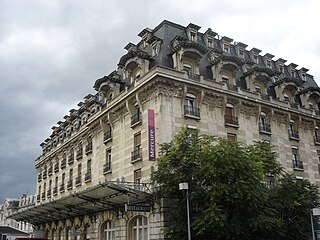 W
WThe Hôtel Mercure Lyon Centre Château Perrache, originally Hôtel Terminus, then Pullman Perrache, then Château Perrache, is a hotel of the AccorHotels group built in 1906. It is located on cours de Verdun in the 2nd arrondissement of Lyon. The hotel was used as the headquarters for the gestapo in Lyon during the Second World War. It is the eponym of the Marcel Ophüls film Hôtel Terminus: The Life and Times of Klaus Barbie about the gestapo in Lyon.
 W
WThe clandestine newspapers of the Resistance were newspapers created in France during Second World War by the movements of Resistance to the German occupation of France, to disseminate their ideas, which played an important role in the history of French journalism, particularly during the 1944 Freedom of the Press Ordinances.
 W
WThe Marseille roundup was the systematic deportation of the Jews of Marseille in the Old Port between 22 and 24 January 1943 under the Vichy regime during the German occupation of France. Assisted by the French police, directed by René Bousquet, the Germans organized a raid to arrest Jews. The police checked the identity documents of 40,000 people, and the operation sent 2,000 Jews first to Fréjus, then to the camp of Royallieu near Compiègne, in the Northern Zone of France, and then to Drancy internment camp, last stop before the extermination camps. The operation also encompassed the expulsion of an entire neighborhood before its destruction. Located in the Old Port, the 1st arrondissement was considered by the Germans to be a "terrorist nest" because of its small, windy and curvy streets For this occasion, SS leader Carl Oberg, in charge of the German Police in France, made the trip from Paris, and transmitted to Bousquet orders directly received from Himmler. It is a notable case of the French police's collaboration with the German occupiers.
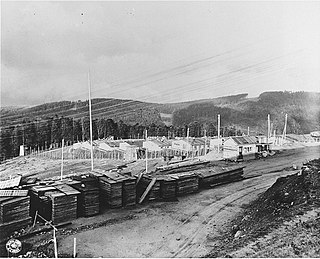 W
WNatzweiler-Struthof was a Nazi concentration camp located in the Vosges Mountains close to the villages of Natzweiler and Struthof in the Gau Baden-Alsace of Germany, on territory annexed from France on a de facto basis in 1940. It operated from 21 May 1941 to September 1944, and was the only concentration camp established by the Germans in the territory of pre-war France. The camp was located in a heavily-forested and isolated area at an elevation of 800 metres (2,600 ft).
 W
WOn 10 June 1944, the village of Oradour-sur-Glane in Haute-Vienne in Nazi-occupied France was destroyed when 642 of its inhabitants, including non-combatant women and children, were massacred by a German Waffen-SS company.
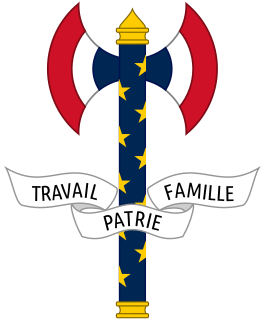 W
WThe Order of the Gallic Francisque is an order and medal which was awarded by the Vichy Regime, the Nazi-aligned government of France during World War II.
 W
WThe Peasant Corporation was a Paris-based organization created by the Vichy France government during World War II (1939–45) to support a corporatist structure of agricultural syndicates. The Ministry of Agriculture was unenthusiastic and undermined the Corporation, which was launched with a provisional structure in 1941 that was not finalized until 1943. By then the small farmers and farm workers had become disillusioned since the Corporation had maintained the privileged position of landowners and had not protected them from demands by the increasingly unpopular German occupiers. The Corporation, which was never effective, was dissolved after the liberation of France in September 1944.
 W
WPitchipoi is the imaginary place where displaced Jews in France believed they would be deported to, while they were interned in the Drancy internment camp awaiting transport to Auschwitz.
 W
WPithiviers internment camp was a transit camp for Jewish deportees in Pithiviers in Occupied France during the Second World War. Children were separated there from their parents; the adults were processed and deported to concentration camps farther away, usually Auschwitz. This was the fate of the novelist Irène Némirovsky.
 W
WThe Révolution nationale was the official ideological program promoted by the Vichy regime which had been established in July 1940 and led by Marshal Philippe Pétain. Pétain's regime was characterized by anti-parliamentarism, rejection of the constitutional separation of powers, personality cultism, xenophobia, state-sponsored anti-Semitism, promotion of traditional values, rejection of modernity, corporatism and opposition to the theory of class conflict. Despite its name, the ideological project was more reactionary than revolutionary as it opposed most changes introduced to French society by the French Revolution.
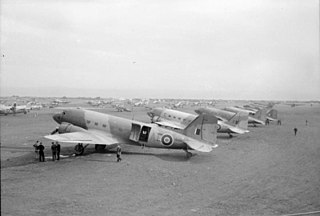 W
WThe Royal Air Force Special Duties (SD) Service was a secret air service created to provide air transport to support the resistance movement in Axis controlled territories. The service helped develop and support the resistance by bringing in agents, wireless operators and supplies. Parachute drop was the primary method by which the Special Duties units delivered supplies and most of the agents to the occupied countries. They also developed an air taxi service to pick up agents, political leaders and special communications from occupied Europe and bring them to England. On the outward flight the air taxi service also delivered agents and high value packages to France. Special Duties flights flew to target fields in Vichy France, Occupied France, Belgium, Netherlands, Norway, Poland, Czechoslovakia, Yugoslavia, and Greece. By the end of the war Special Duties units were also operating in the Far East. The air units were controlled by the Royal Air Force, and worked closely with the SOE and the SIS.
 W
WThe rue Sainte-Catherine Roundup was a Nazi raid and mass arrest of Jews in Lyon's Sainte-Catherine street by the Gestapo. The raid, ordered and personally overseen by Klaus Barbie, took place on 9 February 1943 at the Fédération des sociétés juives de France, then located at the number 12 of this street. The Nazis not only chose the day the Federation normally gave free medical treatment and food to poor Jewish refugees to catch as many people as possible, but they also set up a trap by forcing arrested Federation employees to encourage further people to come to the 12 rue Sainte Catherine.
 W
WThe Armistice of 22 June 1940 was signed at 18:36 near Compiègne, France, by officials of Nazi Germany and the Third French Republic. It did not come into effect until after midnight on 25 June.
 W
WSigmaringen is a town in southern Germany, in the state of Baden-Württemberg. Situated on the upper Danube, it is the capital of the Sigmaringen district.
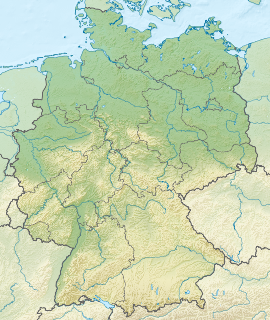 W
WThe Sigmaringen enclave was the exiled remnant of France's Nazi-sympathizing Vichy government which had to flee to Germany during the Liberation of France near the end of World War II in order to avoid capture by the advancing Allied Powers of World War II. They were allocated the requisitioned Sigmaringen Castle as the seat of their government-in-exile.
 W
WThe tragedy of the Guerry's wells designates the massacre of 36 Jews during the summer 1944 in Savigny-en-Septaine in France. It is located at 47°02′07″N 02°31′26″E.
 W
WTravail, famille, patrie was the tripartite motto of the French State during World War II. It replaced the republican motto, Liberté, égalité, fraternité of the Third French Republic.
 W
WThe Union générale des israélites de France was an antisemitic body created by Xavier Vallat under the Vichy regime after the Fall of France in World War II. UGIF was created by decree on 29 November 1941 following a German request, for the express purpose of enabling the discovery and classification of Jews in France and isolating them both morally and materially from the rest of the French population. The mission of the UGIF was to represent Jews before the public authorities, particularly in matters of assistance, welfare and social reintegration. All Jews who were living in France were required to join the UGIF, because the other Jewish associations had been dissolved and their assets had been donated to the UGIF. The administrators of this body mostly belonged to the French-Jewish bourgeoisie, administrators who were appointed by the Commissariat-General for Jewish Affairs (CGQJ), the structure which had been initiated by the Vichy government at the instigation of the Nazis to reinforce antisemitic persecution. In order to finance its activities, the UGIF drew on a solidarity fund whose income was generated from the confiscation of Jewish property, from contributions from its members and funds from the CGQJ.
 W
WThe Vel' d'Hiv' Roundup was a mass arrest of Jews in Paris by the French police, codenamed Opération Vent printanier, on 16 and 17 July 1942. The name "Vel' d'Hiv' Roundup" is derived from the name of the Vélodrome d'Hiver, where a majority of the victims were temporarily confined. The roundup, assisted by French Police, was one of several aimed at eradicating the Jewish population in France, both in the occupied zone and in the free zone. According to records of the Préfecture de Police, 13,152 Jews were arrested, including more than 4,000 children. They were held at the Vélodrome d'Hiver in extremely crowded conditions, almost without food and water and with no sanitary facilities, as well as at the Drancy, Pithiviers, and Beaune-la-Rolande internment camps, then shipped in rail cattle cars to Auschwitz for their mass murder.
 W
WVichy France is the common name of the French State headed by Marshal Philippe Pétain during World War II. Evacuated from Paris to the resort town of Vichy in the unoccupied "Free Zone" in the southern part of Metropolitan France, it remained responsible for the civil administration of France as well as its colonies.
 W
WIn World War II, French West Africa was not a major scene of major fighting. Only one large-scale action took place there: the Battle of Dakar. The region remained under the control of Vichy France after the fall of France and until the Allied invasion of North Africa. French Gabon, the only colony of French Equatorial Africa not to join Free France after the armistice, fell to invading Free French Forces from the neighbouring colonies after the Battle of Gabon, further isolating West Africa.
 W
WThe zone interdite refers to two distinct territories established in German–occupied France during the Second World War after the signature of the Second Armistice at Compiègne, namely, a coastal military zone running along the entire Atlantic coast of France from Spain to Belgium, and the zone réservée in the northeast, intended for German settlement.